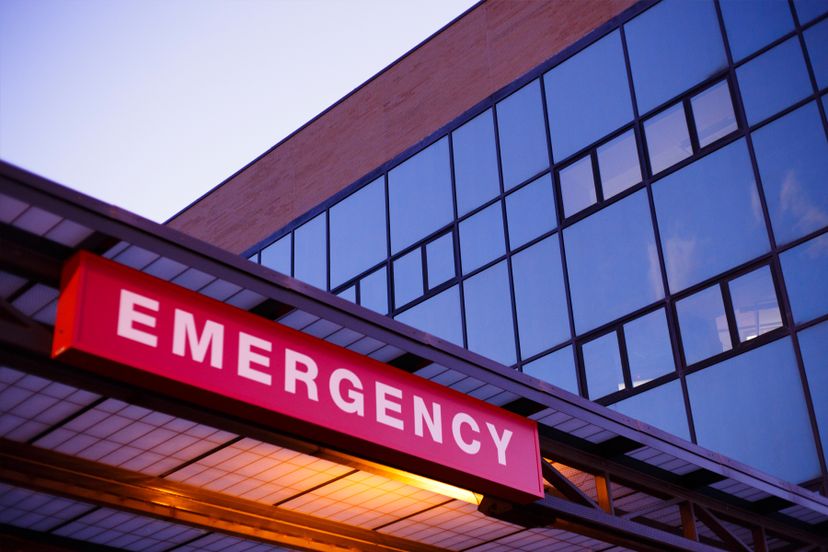
About This Quiz
Think you know all there is to know about ER? Take this quiz to find out just how much you remember.
"ER," the '90s medical drama that started it all, sort of set the tone for the requirements of television doctors. Eye candy only, thank you.
Created by Michael Crichton (yes, THAT Michael Crichton... of Jurassic Park fame), the show debuted in the fall of 1994 and ran for a whopping 15 seasons and 331 episodes. The long-running series remains one of the longest running prime time television series in small screen history. The show won over 100 awards during its run and jump-started the careers of George Clooney and Noah Wyle. Several other cast members, although they had appeared in other films and series' before "ER," realized career success because of the show - think Julianna Margulies. The show showed off its star power with numerous notable guest stars as well, including Shia LeBeouf, Kirsten Dunst, Zac Efron, Eva Mendes, and Nick Offerman.
Since the show ended, other shows have tried and realized success with the same formula: handsome doctors, workplace relationships, and the exciting setting of the hospital environment.
How well do you think you'll do on this quiz? Get started to find out.
Before doctors specialized in emergency medicine, general practitioners treated emergency health problems and worked on call 24/7 in their local communities and towns.
Though the growth of military medicine continues to enhance emergency care (and vice versa), World War II brought about the most change in ERs. Health professionals working as specialists abroad came home and shared what they learned with civilian hospitals.
According to the Centers for Disease Control and Prevention, 21 percent of people 18 years and older visited the ER in 2009.
Advertisement
Emergency rooms use a system called triage to prioritize patients based on the severity of their injuries and illnesses. Individuals with life-threatening conditions will be treated before other patients with less severe health problems to ensure the people who need medical attention the most get it.
General emergency rooms might not be the best option for pregnant women, but if a patient does not know she's pregnant or has unusual bleeding because of pregnancy complications, it's likely she'll end up there. Hospitals usually have an obstetrics specialist in the ER, too.
Individuals with lower incomes living in rural areas were the most likely to visit the ER, according to the U.S. Agency of Healthcare Research and Quality.
Advertisement
EMTS, paramedics, doctors and hospital staff all work together to save lives. But EMTs and paramedics are usually the ones retrieving patients and providing life-saving care on the scene, while ER doctors usually see patients in the hospital.
The term non-urgent visit does not mean a person doesn't need treatment for an injury or illness. Rather, it's a level in an ER's priority system in which nurses assess the patient's condition and conclude the problem is not life-threatening if treated between 120 minutes and 24 hours.
Experts from the American College of Emergency Physicians Foundation say it's important to be specific about your symptoms and make sure doctors know about your medications and health history.
Advertisement
You might want to consider whether you're condition really requires emergency medical attention because waits in ERs are growing longer. Experts think people are using emergency rooms at greater rates than new ERs can be created, which has led to overcrowding.
Fevers can be dangerous for young children. Experts say to get a child to the doctor immediately if he or she develops a fever 100.4 Fahrenheit (38 Celsius) or higher when measured with a rectal thermometer.
Urgent care centers offer treatment for non-life-threatening conditions and refer life-threatening conditions to emergency departments. They're usually less expensive than the ER as well.
Advertisement
Tick bites might not seem as dangerous as those from snakes, but these arachnids are known carriers of bacteria that can lead to some severe infections in the weeks following a bite. In some cases, emergency care is needed for either type of bite.
Stomach and head pains bring many people to the ER, but they don't always require emergency assistance. Sudden changes in vision, however, calls for immediate attention.
Ear infections are the odd one out. Sprains, breaks and abdominal pain are fairly common.
Advertisement
All types of people need emergency care, but according to the Centers for Disease Control and Prevention, individuals who most frequently use ER services are older or rely on government programs such as Medicaid.
All three are frequently swallowed, but soda can tabs can scrape or puncture the inside of a patients digestive system, causing serious problems.
According to 2008 figures from the CDC, Americans made 124 million visits to the ER.
Advertisement
Emergency rooms generally specialize in surgeries, cardiac illnesses, injuries from trauma, orthopedic recovery and obstetrics, making the second answer the best choice.